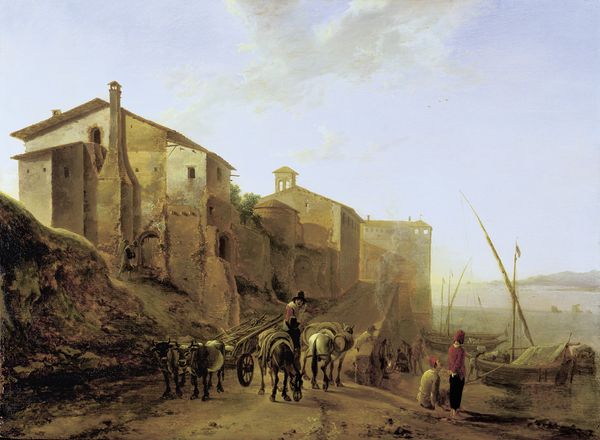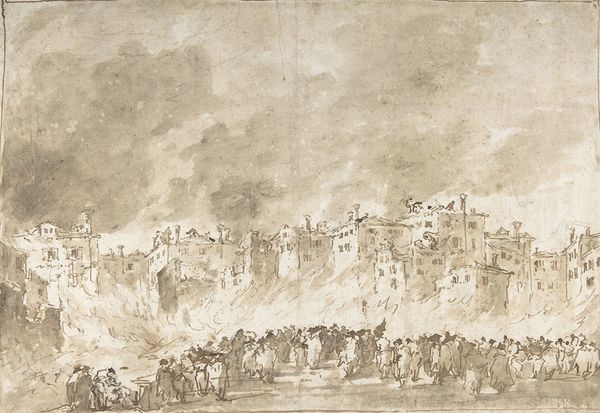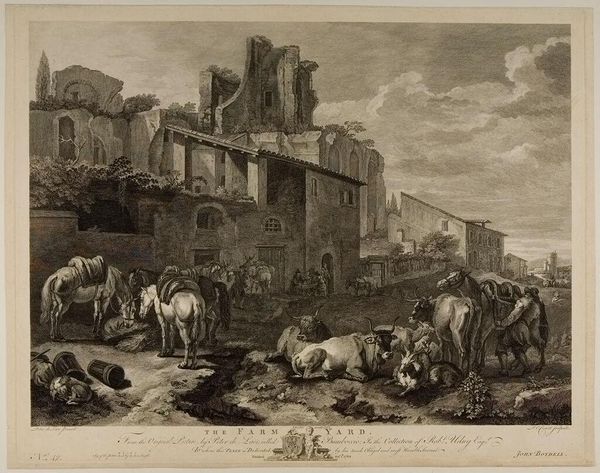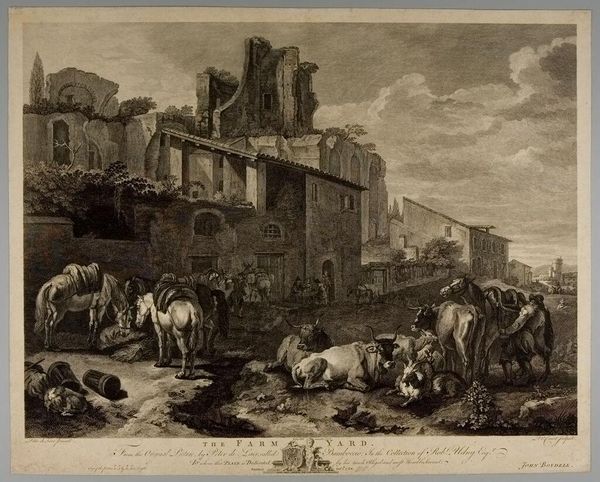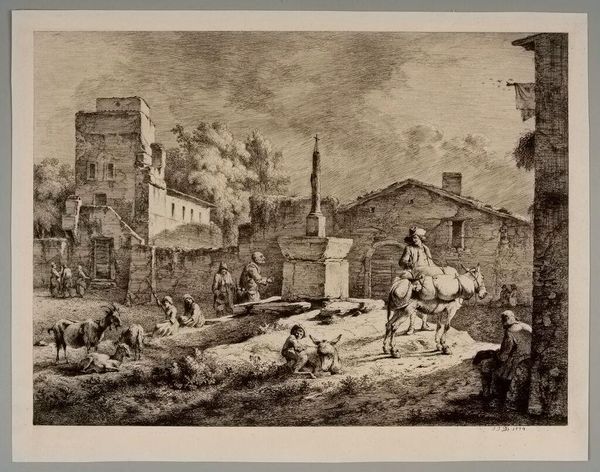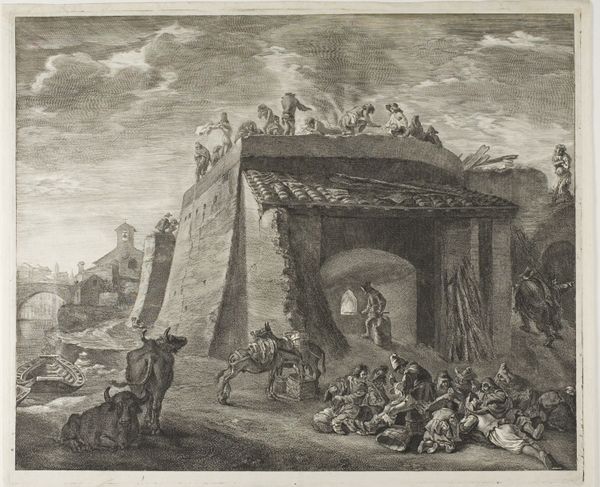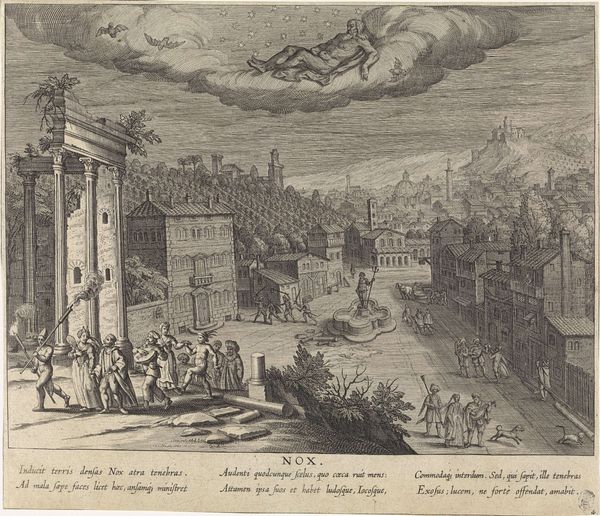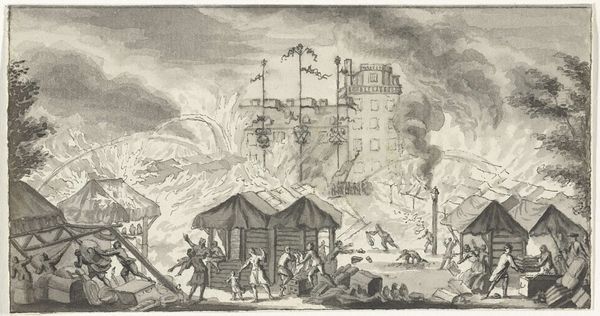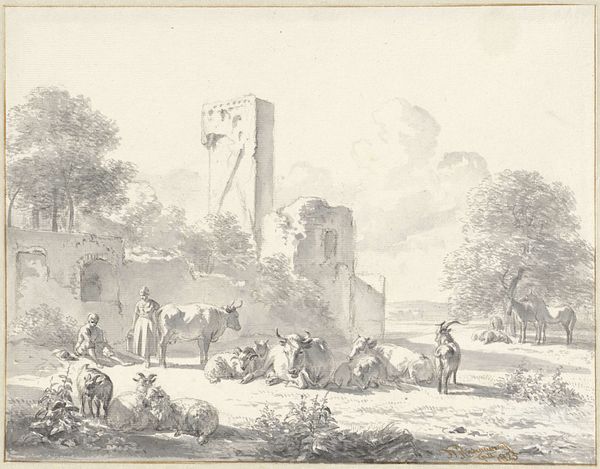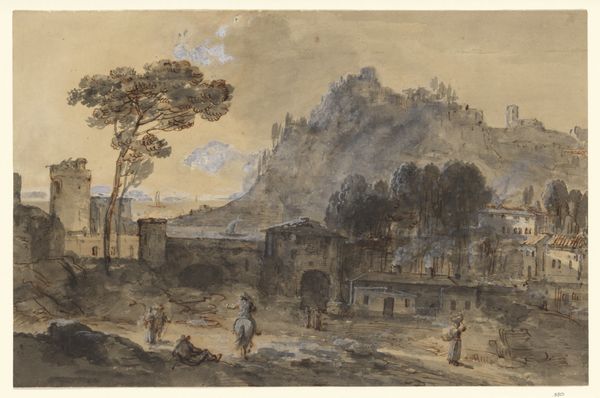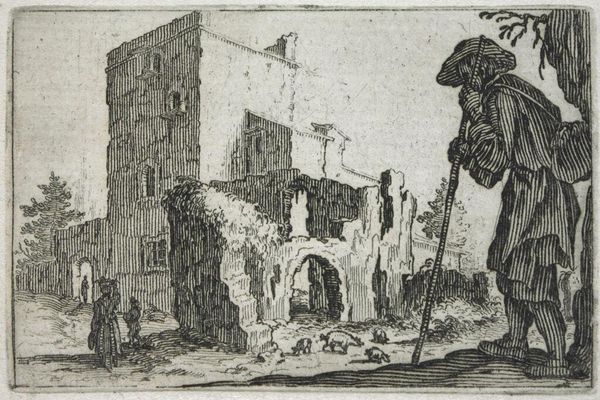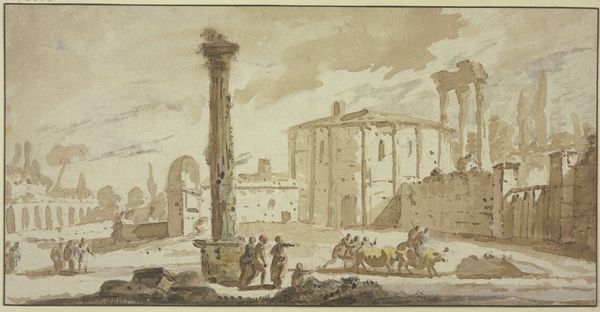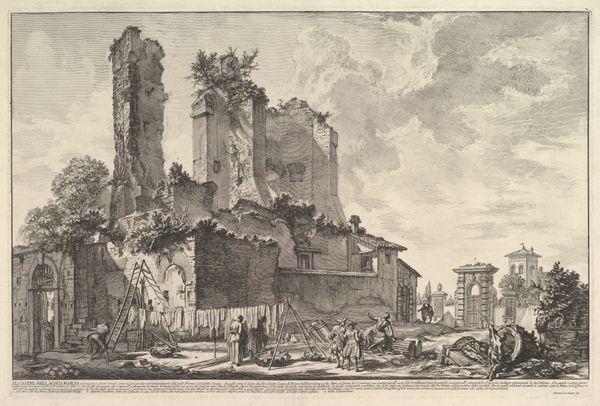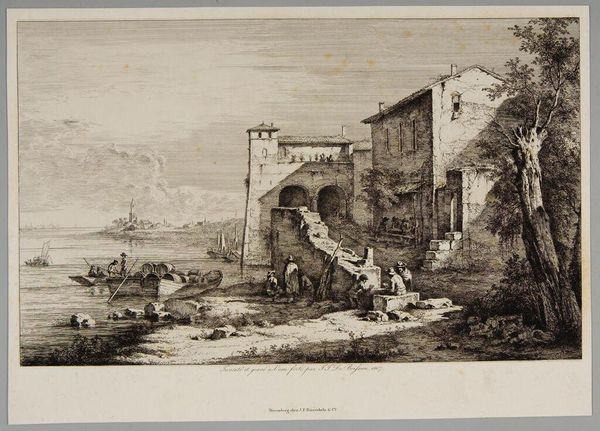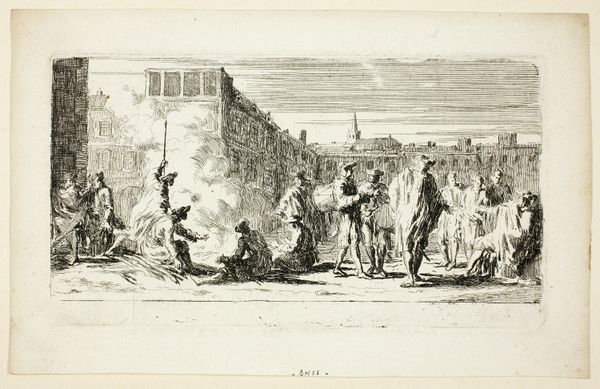
painting, oil-paint
#
baroque
#
painting
#
oil-paint
#
landscape
#
oil painting
#
cityscape
#
history-painting
Copyright: Public domain
Editor: This oil on canvas painting is "A Roman Limekiln" by Sebastien Bourdon, created in 1637. It feels... chaotic, yet ordered at the same time. There's so much happening, so many figures, but the composition holds it together. How do you interpret this work? Curator: Immediately, I am drawn to the masterful handling of light and shadow, what the Italians called "tenebrism". Notice how the artist uses the dramatic contrast between light and dark to guide our eye, creating a visual hierarchy within the composition. What purpose does this manipulation serve, do you think? Editor: Perhaps to emphasize certain figures or activities? It seems like the limekiln itself, glowing intensely, is a focal point, but so are the groups of people scattered throughout the scene. Curator: Precisely. Consider the formal elements: the geometry of the architecture juxtaposed with the organic forms of the figures, the warm palette offset by cooler grays and blues. Bourdon employs a dynamic arrangement, where verticals of buildings face off with the diagonals of workers' tasks. Does the painting appear stable, unstable, or balanced, visually speaking? Editor: Balanced, but with tension. It's like the artist is deliberately playing with our expectations. He directs our attention towards certain things to provoke a certain feeling through structure, and the painting seems all the richer for it. Curator: An excellent point. Consider the strategic use of implied lines. Do they direct you to certain compositional elements? Editor: Yes, they certainly direct attention towards both central structures and add motion within. I see this painting quite differently now!
Comments
No comments
Be the first to comment and join the conversation on the ultimate creative platform.
